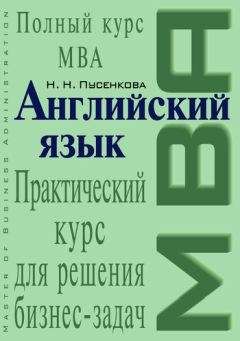Ознакомительная версия.
This may be the most important commandment of all. Although the «highs» you can achieve when you are successfully trading commodities can be spectacular, you must always keep in mind that this is a serious business. And like many things in life, if you haven’t done it before you need someone to help show you the way. You need a guide. If you don’t understand how to read a chart or the proper terminology to use when placing trades, or what supply and demand factors may affect the currency or commodity being considered, then you should open an account with an experienced commodity broker. Although it will cost more, in the long run I believe you will save money. That’s because it takes time to learn how to trade. Most professional traders spend a fair amount of time in the school of hard knocks before succeeding. They need to live through both bull and bear markets to gain the proper perspective. Don’t kid yourself – experience counts. A good broker can help you greatly in your pursuit of profits. And if you get the right one, you can even «earn while you learn.»
What I’ve tried to do in this handbook is focus on the psychology and discipline of successful trading. Remember, if it was as simple as having a degree in economics, or knowing the implication of every known chart formation, there would be substantially more millionaire traders out there. Obviously, it takes more. I hope I’ve been able to help you to become a more successful commodity trader.
Source: Don Varden, www.tradeamerican.com
1. future n – зд. фьючерсный контракт
2. place stops – отдавать приказ «стоп»
3. stop loss order (SLO) – приказ «остановить убытки»
4. position trade – позиционная торговля на срочных рынках
5. option premium – опционная премия (сумма, уплачиваемая покупателем за опционный контракт)
6. whipsaw n – «продольная пила»; возможность понести двойной убыток при покупке по наивысшей цене перед снижением и продаже по самой низкой цене перед повышением
whipsaw v – понести двойные убытки
7. trailing stop system – система скользящих приказов «стоп»
8. lock-in v – зафиксировать, законтрактовать
9. chart point – точки на графике
10. money management – управление деньгами
11. contingent order – условный приказ
12. stop-limit order – приказ «стоп-лимит»
13. overtrade v – чрезмерная торговля (расширение продаж компании сверх имеющегося у нее оборотного капитала; чрезмерные покупки и продажи брокером для увеличения своих комиссионных доходов)
14. out-of-the-money option – опцион «без денег»
15. round-turn basis – комиссия за две стороны сделки; разовая комиссия брокеру при ликвидации срочной позиции; завершенная фьючерская операция
16. rally n – значительное повышение курса ценных бумаг или товарных цен после снижения, восстановление уровня экономической активности после спада
rally v – повышаться, восстанавливаться после спада или снижения
17. call option – опцион «колл»
18. in-the-money option – опцион «в деньгах»
19.buy long – «длинная» покупка
20. stochastic a – стохастический (переменная величина, которая определяется случаем)
21. ADX (Average Directional Movement Index) line – линия ADX
22. contrary opinion – мнение, противоположное всеобщему
23. bear market – «рынок медведей»
Exercise 1. Answer the following questions.
1. Is there a foolproof system in commodity trading? 2. Why is it important to use stop loss orders? 3. What is the most common scenario for turning profits into losses? 4. Why is it necessary to be cool, calm and clearheaded in commodity trading? 5. How much do professional traders risk on a trade? 6. Why is it important not to place all your eggs in one basket? 7. Why is it risky to buy deep out of the money options? 8. How do pros regard trends? 9. How do pros identify the best trades? 10. What is the essence of contrary opinion? 11. Why is it better for amateurs to get an experienced commodity broker?
Exercise 2*. Find terms in the text that match definitions given below and make sentences of your own with each term.
1. a market distinguished by declining prices
2. a market distinguished by rising prices
3. an obligation to exchange a good or instrument at a set price on a future date
4. the purchase of a stock, commodity, or currency for investment or speculation.
5. the selling of a currency or instrument not owned by the seller
6. an order with restrictions on the maximum price to be paid or the minimum price to be received
7. the right (but not the obligation) to buy or sell an asset at a given price on or before a given date
8. a recovery in price after a period of decline
9. order type whereby an open position is automatically liquidated at a specific price
10. slang for a condition of a highly volatile market where a sharp price movement is quickly followed by a sharp reversal
Exercise 3. You are a journalist working for Business Week and you are to interview a prominent Wall Street broker who tries to explain secrets of his success. Make a dialogue between these two individuals using the following briefing material.
The Five Biggest Stock Market Myths
When fiascos like the Enron bankruptcy, and auditing scandals occur, investor confidence can be at an all-time low. Many investors wonder whether or not investing in stocks is worth all the hassle. However, it’s important to keep a realistic view of the stock market. Regardless of the real problems, common myths about the stock market often arise. Here we go over these myths in order to bust them.
1) Investing in stocks is just like gambling.
This reasoning causes many people to shy away from the stock market. To understand why investing in stocks is inherently different from gambling, we need to review what it means to buy stocks. A share of common stock is ownership in a company. It entitles the holder to a claim on assets as well as a fraction of the profits that the company generates. Too often, investors think of shares as simply a trading vehicle, and they forget that stock represents the ownership of a company.
Gambling, on the contrary, is a zero-sum game. It merely takes money from a loser and gives it to a winner. No value is ever created. By investing, we increase the overall wealth of an economy. As companies compete, they increase productivity and develop products that can make our lives better.
2) The stock market is an exclusive club in which only brokers and rich people make money.
Many market advisors claim to be able to call the markets’ every turn. The fact is that almost every study done on this topic has proven that these claims are false. Most market prognosticators are notoriously inaccurate; furthermore, the advent of the Internet has made the market much more open to the public than ever before. All the data and research tools previously available only to brokerages are now there for individuals to use.
Actually, individuals have an advantage over institutional investors because individuals can afford to be long-term oriented. The big money managers are under extreme pressure to get high returns every quarter. Their performance is often so scrutinized that they can’t invest in opportunities that take some time to develop.
3) Fallen angels will all go back up, eventually.
Whatever the reason for this myth’s appeal, nothing is more destructive to amateur investors than thinking that a stock trading near a 52-week low is a good buy. Think of this in terms of the old Wall Street adage, «Those who try to catch a falling knife only get hurt.»
All things being equal, a majority of investors choose the stock that has fallen from $50 because they believe that it will eventually make it back up to those levels again. Thinking this way is a cardinal sin in investing! Price is only one part of the investing equation (which is different from trading, which uses technical analysis). The goal is to buy good companies at a reasonable price. Buying companies solely because their market price has fallen will get you nowhere.
4) Stocks that go up must come down.
The laws of physics do not apply in the stock market. There is no gravitational force that pulls stocks back to even. Over ten years ago, Berkshire Hathaway’s stock price went from $6,000 to $10,000 per share in a little more than a year. Had you thought that this stock was going to return to its lower initial position, you would have missed out on the subsequent rise to $70,000 per share over the following six years
We’re not trying to tell you that stocks never undergo a correction. The point is that the stock price is a reflection of the company. If you find a great firm run by excellent managers, there is no reason the stock won’t keep on going up.
5) Having just a little knowledge, because it is better than none, is enough to invest in the stock market.
Knowing something is generally better than nothing, but it is crucial in the stock market that individual investors have a clear understanding of what they are doing with their money. It’s those investors who really do their homework that succeed.
Don’t fret, if you don’t have the time to fully understand what to do with your money, then having an advisor is not a bad thing. The cost of investing in something that you do not fully understand far outweighs the cost of using an investment advisor.
Source: June 19, 2002, Investopedia.com
Exercise 4*. Fill in the blanks using terms given below.
Digging Deeper Into Bull And Bear Markets
What Are Bear and Bull Markets?
Used to describe how stock markets are doing in general – that is, whether they are….. or…… in value – these two terms are constantly buzzing around the investing world. At the same time, since the market is determined by investors’……, these terms also denote how investors feel about the market and the ensuing trend.
Simply put, a…… market refers to a market that is on the rise. In such times, investors have faith that the……will continue in the long term. Typically, the country’s……. is strong and……. levels are high.
On the other hand, a…… market is one that is in decline. Share prices are continuously dropping, resulting in a……. trend that investors believe will continue in the long run, which, in turn, perpetuates the spiral. The economy will typically slow down and unemployment will rise as companies begin……. off workers.
Characteristics of a Bull and Bear Market
Although we know that a bull or bear market condition is marked by the direction of……. prices, there are some accompanying characteristics of the bull and bear markets that investors should be aware of.
Supply and demand for securities – In a bull market, we see strong…… and weak……. for securities. As a result…… prices will rise as investors compete to obtain available equity. In a bear market, the opposite is true as more people are looking to….. than……, and, as a result, share prices drop.
Investor psychology – Since the market’s behavior is impacted and determined by how…….. perceive that behavior, investor psychology and sentiment are……. to whether the market will rise or fall. Stock market……. and investor psychology are mutually dependent. In a bull market, most everyone is interested in the market, willingly participating in hopes of obtaining a……. During a bear market, on the other hand, market sentiment is negative as investors are beginning to move their money out of……. and waiting in……. securities until there is a positive move. In sum, the decline in stock market prices shakes investor……… which causes investors to keep their money out of the market – which, in turn, causes the……. in the stock market.
Change in economic activity – Since the businesses whose stocks are……. on the……. are the participants of the greater economy, the stock market and the economy are strongly connected. A bear market is associated with a weak economy as most businesses are unable to……. huge profits because……. are not spending nearly enough. This decline in profits, of course, directly affects the way the market……. stocks. In a bull market, the reverse occurs as people have more money to spend and are willing to spend it, which, in turn……. and strengthens the economy.
How to Gauge Market Changes
The key……. of whether the market is bull or bear is the long-term……., not just the market’s knee-jerk reaction to a particular event. Small movements would only represent a short-term trend or a market……. Of course, the length of the time period that you are viewing will…….. whether or not you see a bull or bear market.
For instance, the last two weeks could have shown the market to be bullish while the last two years may have displayed a bearish……. Thus, most agree that a decided…… in the market should be ascertained by the degree of the change: if…… indexes have changed by at least 15—20%, investors can be quite certain the market has taken a different direction. If the new trend does continue it is because investors are perceiving changes in both market and economic conditions and are thus making…… accordingly.
Ознакомительная версия.





